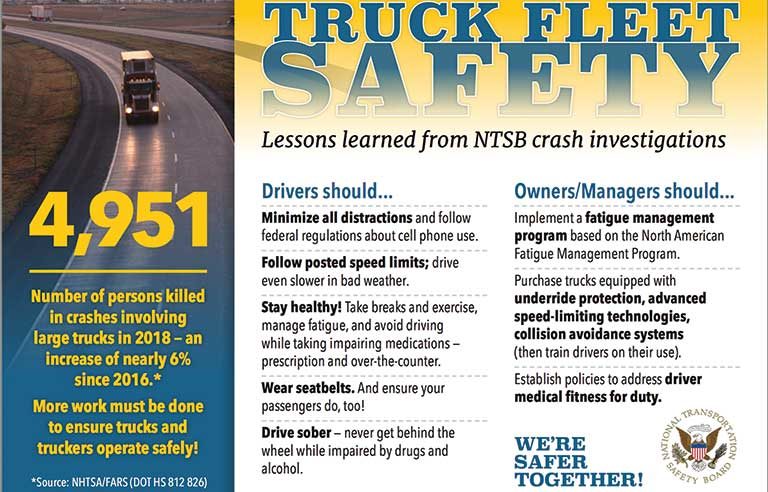New from NTSB: Safety tip card for truck drivers

Washington — A new safety tip card created by the National Transportation Safety Board for commercial motor vehicle drivers and owners is intended to reinforce common lessons learned from agency crash investigations, as well as issues outlined in NTSB’s list of 10 “Most Wanted” safety improvements for 2019-2020.
Designed to be stored above a truck’s visor, the card advises drivers to:
- Minimize all distractions and follow federal regulations regarding cellphone use.
- Follow posted speed limits, and drive slower in inclement weather.
- Stay healthy by taking breaks, exercising and managing fatigue. Also, avoid driving while taking prescription or over-the-counter medications that can cause impairment.
- Wear seat belts, and make sure passengers follow suit.
- Drive sober; never operate a CMV while impaired by drugs and alcohol.
Tips for CMV owners and/or managers include:
- Implement a fatigue management program following North American Fatigue Management Program guidelines.
- Purchase CMVs equipped with underride protection, advanced speed-limiting technologies and collision avoidance technologies, and train drivers on their use.
- Establish policies to address driver medical fitness for duty.
Citing data from the National Highway Traffic Safety Administration’s Fatality Analysis Reporting System, the card states that 4,951 people were killed in crashes involving large trucks in 2018 – an increase of almost 6% from 2016.
“Commercial trucking is integral to our economy and our American way of life,” the card states. “However, large trucks introduce a disproportionate hazard to passenger vehicle occupants involved in a crash due to their sheer size, weight and physical properties.”
Post a comment to this article
Safety+Health welcomes comments that promote respectful dialogue. Please stay on topic. Comments that contain personal attacks, profanity or abusive language – or those aggressively promoting products or services – will be removed. We reserve the right to determine which comments violate our comment policy. (Anonymous comments are welcome; merely skip the “name” field in the comment box. An email address is required but will not be included with your comment.)

